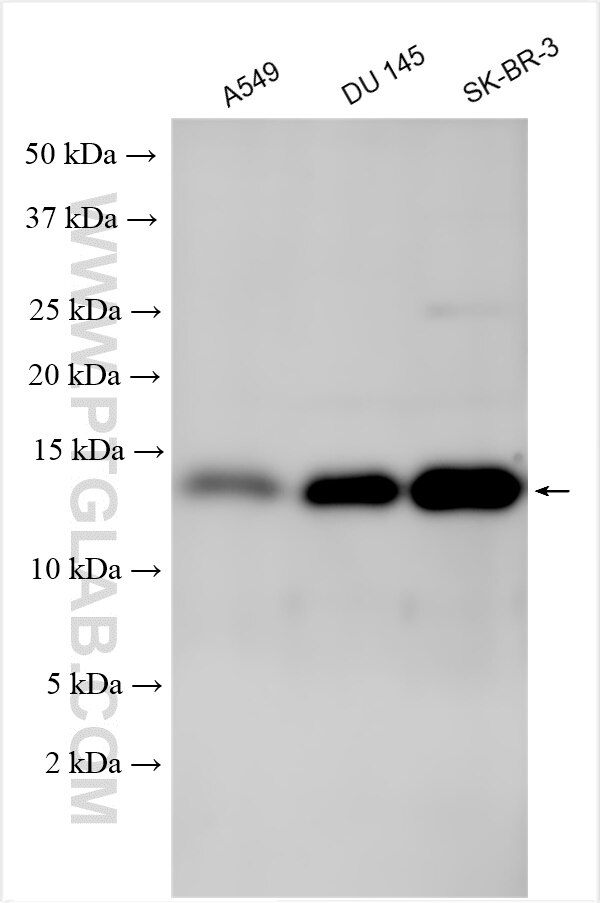Tested Applications
| Positive WB detected in | A549 cells, DU 145 cells, SK-BR-3 cells |
Recommended dilution
| Application | Dilution |
|---|---|
| Western Blot (WB) | WB : 1:500-1:1000 |
| It is recommended that this reagent should be titrated in each testing system to obtain optimal results. | |
| Sample-dependent, Check data in validation data gallery. | |
Product Information
20876-1-AP targets MIEN1 in WB, ELISA applications and shows reactivity with human samples.
| Tested Reactivity | human |
| Host / Isotype | Rabbit / IgG |
| Class | Polyclonal |
| Type | Antibody |
| Immunogen |
CatNo: Ag14975 Product name: Recombinant human C17orf37 protein Source: e coli.-derived, PGEX-4T Tag: GST Domain: 1-115 aa of BC006006 Sequence: MSGEPGQTSVAPPPEEVEPGSGVRIVVEYCEPCGFEATYLELASAVKEQYPGIEIESRLGGTGAFEIEINGQLVFSKLENGGFPYEKDLIEAIRRASNGETLEKITNSRPPCVIL Predict reactive species |
| Full Name | chromosome 17 open reading frame 37 |
| Calculated Molecular Weight | 115 aa, 12 kDa |
| Observed Molecular Weight | 12 kDa |
| GenBank Accession Number | BC006006 |
| Gene Symbol | C17orf37 |
| Gene ID (NCBI) | 84299 |
| RRID | AB_3085626 |
| Conjugate | Unconjugated |
| Form | Liquid |
| Purification Method | Antigen affinity purification |
| UNIPROT ID | Q9BRT3 |
| Storage Buffer | PBS with 0.02% sodium azide and 50% glycerol, pH 7.3. |
| Storage Conditions | Store at -20°C. Stable for one year after shipment. Aliquoting is unnecessary for -20oC storage. 20ul sizes contain 0.1% BSA. |
Background Information
C17orf37 (chromosome 17 open reading frame 37), also known as C35/Rdx12/MGC14832, is located on human chromosome 17q12, 505 nucleotides from the 3¶ end of the ERBB2 oncogenes. C17orf37 expression positively correlates with grade and stage of breast cancer, and increased expression has been shown in prostate cancer cells and tissue specimens (PMID: 17121940, 19503095)..C17orf37 gene encodes a 12-kDa protein that does not have sequence similarity with any known protein. C17orf37 is expressed as a cytosolic protein with predominant membrane localization (PMID: 21628459).
Protocols
| Product Specific Protocols | |
|---|---|
| WB protocol for MIEN1 antibody 20876-1-AP | Download protocol |
| Standard Protocols | |
|---|---|
| Click here to view our Standard Protocols |




